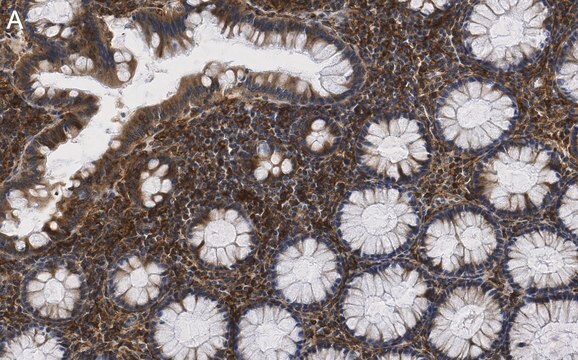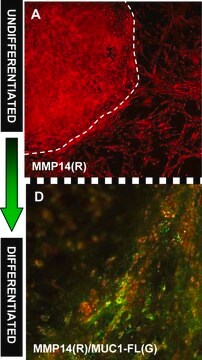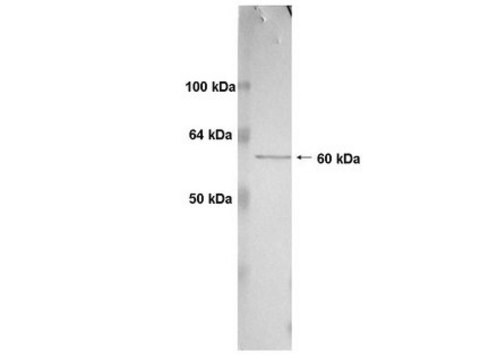AB6004
Anti-MT1-MMP Antibody, hinge region
from rabbit, purified by affinity chromatography
Synonym(s):
MT-MMP 1, Membrane-type matrix metalloproteinase 1, Membrane-type-1 matrix metalloproteinase, matrix metallopeptidase 14 (membrane-inserted), matrix metalloproteinase 14, matrix metalloproteinase 14 (membrane-inserted), membrane type 1 metalloprotease
About This Item
Recommended Products
biological source
rabbit
Quality Level
antibody form
affinity isolated antibody
antibody product type
primary antibodies
clone
polyclonal
purified by
affinity chromatography
species reactivity
human, rat
technique(s)
immunohistochemistry: suitable (paraffin)
western blot: suitable
UniProt accession no.
shipped in
wet ice
target post-translational modification
unmodified
Gene Information
human ... MMP14(4323)
General description
Most MMP′s are secreted as inactive proproteins which are activated when cleaved by extracellular proteinases. However, MT1-MMP (MMP-14) is a member of the membrane-type subfamily. Each member of this subfamily contains a potential transmembrane domain suggesting that these proteins are expressed at the cell surface rather than secreted. MT1-MMP is capable of mediating pericellular proteolysis of extracellular matrix components and is therefore thought to be an important molecular tool for cellular remodeling of the surrounding matrix. This protein also activates MMP2 protein, and this activity may be involved in tumor invasion.
Specificity
Immunogen
Application
Quality
Target description
Linkage
Analysis Note
Rat lung lysate.
Other Notes
Not finding the right product?
Try our Product Selector Tool.
recommended
Storage Class Code
12 - Non Combustible Liquids
WGK
WGK 1
Flash Point(F)
Not applicable
Flash Point(C)
Not applicable
Certificates of Analysis (COA)
Search for Certificates of Analysis (COA) by entering the products Lot/Batch Number. Lot and Batch Numbers can be found on a product’s label following the words ‘Lot’ or ‘Batch’.
Already Own This Product?
Find documentation for the products that you have recently purchased in the Document Library.
Our team of scientists has experience in all areas of research including Life Science, Material Science, Chemical Synthesis, Chromatography, Analytical and many others.
Contact Technical Service





